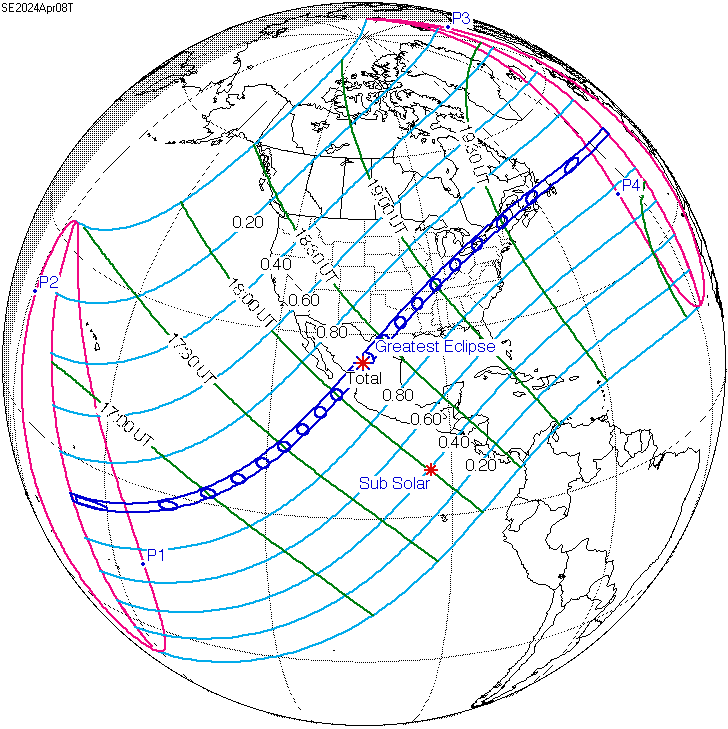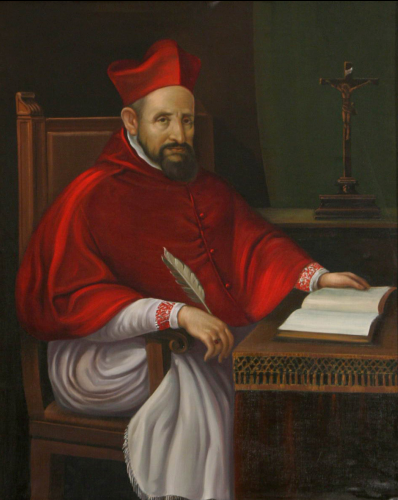 A view of a total solar eclipse
A view of a total solar eclipse [
By I, Luc Viatour, CC BY-SA 3.0, https://commons.wikimedia.org/w/index.php?curid=1107408]
Today, 21 August 2017, is a date that has sat on my to-do calendar for quite a few years now: the date that a total solar eclipse will pass across the United States of America from Oregon to South Carolina, and will be visible as a partial eclipse over much of the rest of the country.
 Geometry of a solar eclipse.
Geometry of a solar eclipse.
What is a solar eclipse?
Simply, it is the rather infrequent situation where the moon passes precisely between the sun and the earth, allowing its shadow to fall over a narrow part of the surface of the earth. The means that for that narrow swath of land that falls in the shadow of the moon, the sun is blotted out for a few minutes.
 This diagram illustrates how the moon orbits the earth at just over 5 degrees in divergence from that of the earth around the sun (or off of the ecliptic), meaning that solar eclipses are infrequent.
This diagram illustrates how the moon orbits the earth at just over 5 degrees in divergence from that of the earth around the sun (or off of the ecliptic), meaning that solar eclipses are infrequent.
Of course, this can only occur when a moon is at its new moon phase. Typically the new moon is simply invisible to us, and since the moon orbits the earth at a divergence from the ecliptic (the apparent path of the sun through the starts) of just over 5 degrees, most of the time the shadow of the moon entirely misses the earth. The solar eclipse is an exception, however, and the total solar eclipse, in particular, is a dramatic deviation from the norm.
The difference between the partial and total solar eclipse is impressive, and this consideration illustrates:
"Since the photosphere is 1 million times brighter than the corona, even a 99 percent partial eclipse still leaves 1 percent of 1 million times, or 10,000 times, more light from the photosphere than there is from the corona." -- Jay Pasachoff, Stars and Planets, 490-491.
For that reason, the total solar eclipse is described as one of the most compelling natural phenomenon.
 Time-lapse of the 2008 total eclipse in 3 minute intervals.
Time-lapse of the 2008 total eclipse in 3 minute intervals.
[
By User:Kalan - Based on 38 own photos, CC BY 3.0, https://commons.wikimedia.org/w/index.php?curid=4512025]
Today, the remarkable experience of totality will occur for folks in the narrow band running coast-to-coast for around 2 minutes. What a two minutes it should be!
For more information on the one that is occurring today, you might note some of the following resources.
This site, from NASA, gives you an interactive map of the eclipse route, allowing you to pin-point the time of the eclipse by location:
NASA Eclipse Route Map
Also from NASA, here is the link to the live broadcast of the event:
NASA TV
This site will allow you to run a simulator to view what the eclipse will look like from any location:
Eclipse Simulator
If you are looking to learn more about solar eclipses, or to teach about them, here is a useful resource:
American Astronomical Society: Teaching the Eclipse
If you have the chance to see it, enjoy!
If you don't, well, the next total solar eclipse in the United States, at least, will come on 8 April 2024, so you might put that on your calendar...
 The 8 April 2024 total solar eclipse map.
The 8 April 2024 total solar eclipse map.
May these remarkable celestial events reinforce for all of us the greatness of our Creator who set it all in motion...
Live well!








